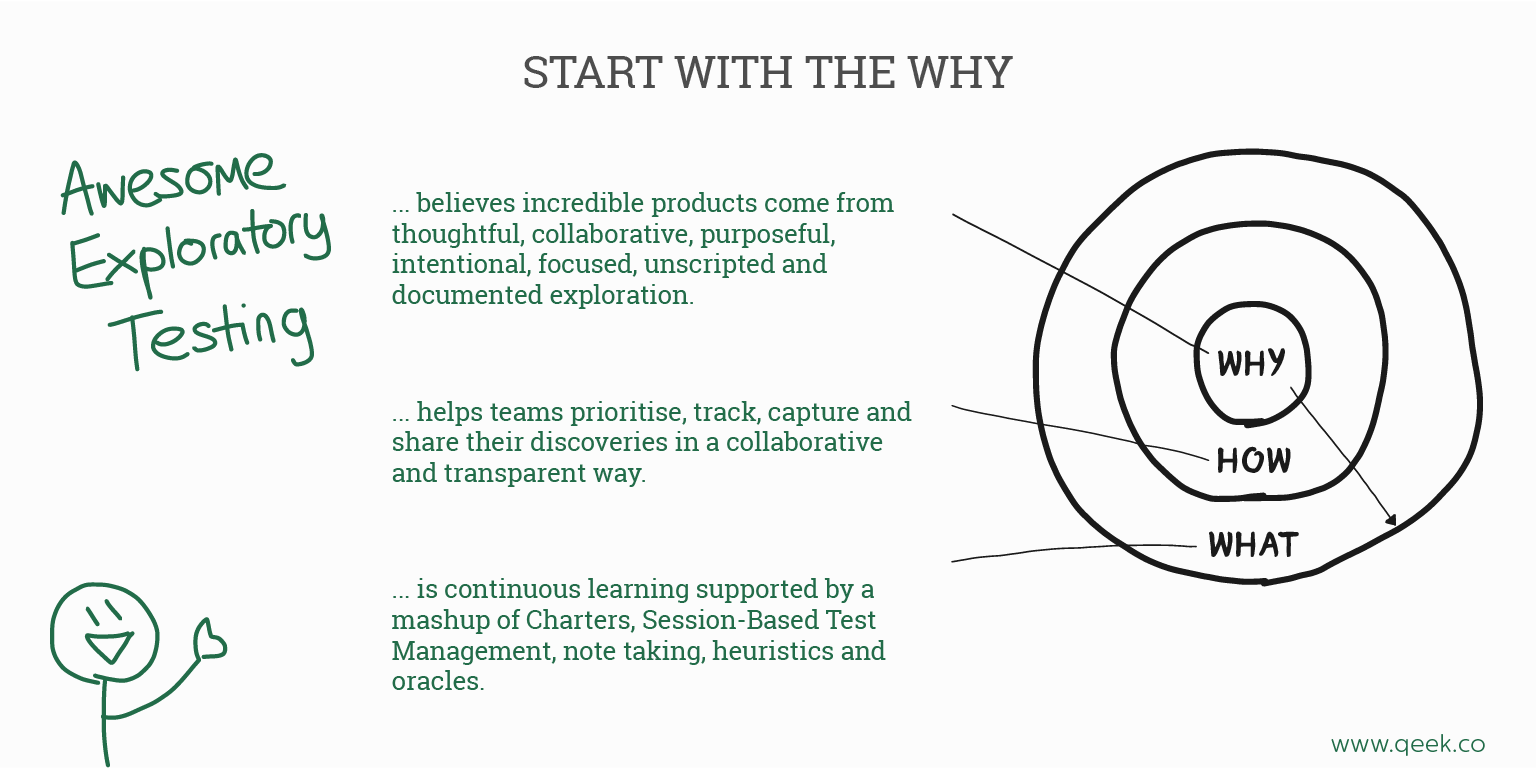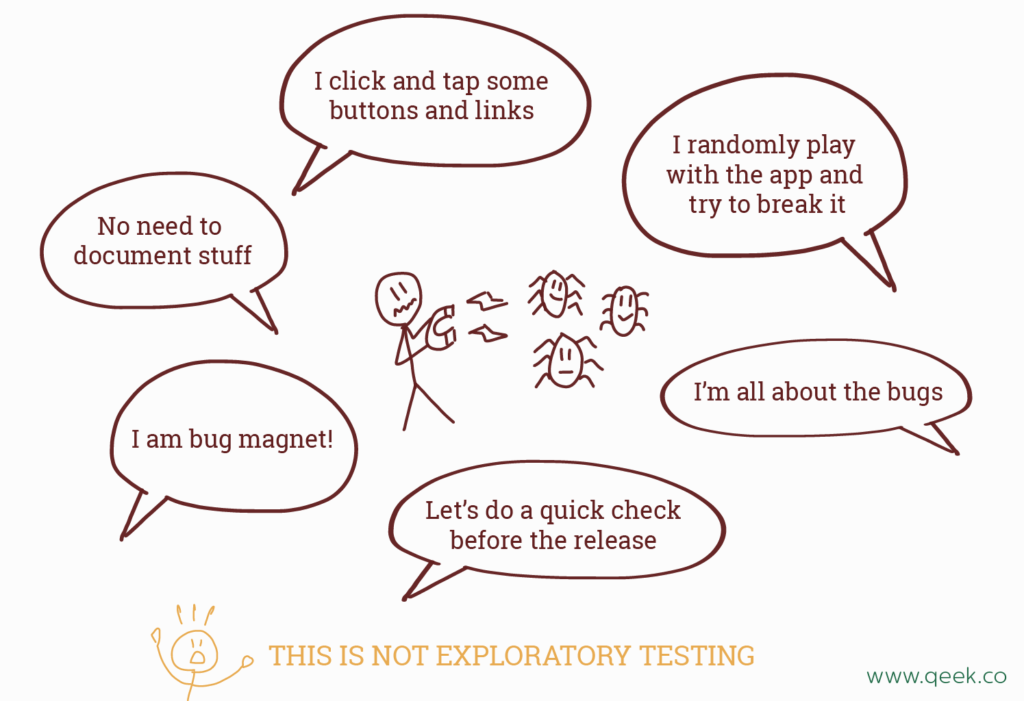
TL;DR
Now that we know James Bach’s idea of the Thread-Based Test Management, let’s explore the first of three digestible diagrams created by Simon Thomes Start with the Why. This is a part of the Exploratory Testing Pathway. Many thanks to Marcel who sublimed this great resource on his blog, That’s the buffet table.
Simon Tomes
I had a privilege to meet in person Simon at Test Bash Brighton 2017 open session about his testbuddy.co application for exploratory testing. It was a great 45-minute discussion about exploratory testing application feature set. Three years after, the test buddy is ready to use product.
Simon is not only an exploratory testing advocate but also a skillful exploratory testing practitioner. Three Digestible Diagrams to Describe Exploratory Testing is an excellent example of that fact.
What Is Not Exploratory Testing
As we already wrote on our blog, exploratory testing is not ad hoc testing, some kind of a play with an application under test. Simon nicely summarizes in the following diagram what is not exploratory testing:

We need to stress two essential aspects of this diagram:
- ad hoc testing is when we do not have an idea of why we test. Charter is what we have in exploratory testing for general test strategy
- when we only hunt for bugs means that we are at the second level of the Beizer testing organization. We usually find many, not critical bugs that just annoy the whole team.
Start With The Why
And continue with the how and what. When you can explain why, how, and what you are testing with exploratory testing, you would prove and move from bug hunting and ad hoc testing paradigm.
We need to stress Simon’s following points:
- exploration is unscripted (no steps but with charter and area) but documented activity (session testing notes.)
- Share with the team discovered information (not only bugs).
- Exploratory testing is a continuous activity, which means that valuable testing is never done.


